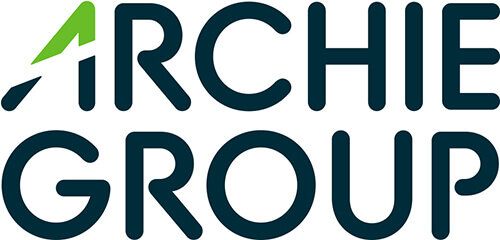How banks can help fintechs find their fit
David Martin, BBVA senior manager of open innovation
After a decade-plus of working on the banking side as Senior Manager of Open Innovation at BBVA, David Martin now helps fintechs match up with banks looking to innovate. David, along with Mario Cohen, founder of Israeli-based fintech VC fund Star26, spoke with Archie Group about the early days of bank-fintech collaboration, what obstacles fintechs need to overcome, and where fintech investments are heading this year. This conversation has been edited for length and clarity.
Archie: From the perspective of BBVA, how has the corporate innovation ecosystem changed over the past decade in terms of collaboration with fintechs?
David: I joined BBVA’s innovation team back in 2010. BBVA is the second largest bank in Spain after Santander, and the way innovation has evolved from back then is the same across similar banks of that size. Back In 2010, no one was talking about partnering with startups. If you take a country on the scale of Spain—far smaller than the US, but still the fifth largest economy in Europe—there were only 50 fintechs in Spain back then. Today there are now 500 fintechs in Spain.
Archie: How did BBVA initially approach corporate innovation?
David: When I joined the bank, we were talking about “open innovation” but in a different way. We collaborated with other institutions to find out what was possible, like MIT, Stanford Research Institute, some other institutions in Germany and Japan, big names at the time. These organizations had little to do with startups directly. This strategy was more about big banks like BBVA creating a place in the ecosystem by collaborating with big brands aligned with innovative ideas. In 2010 we launched our Open Talent global talent competition in by offering startups visibility and cash, but the strategy did not involve working directly with the startup, it was more for BBVA to get visibility as an active player in the tech ecosystem.
Archie: When did BBVA start collaborating with fintechs?
David: The first shift came in 2013, we opened our first visibility project, where we started providing tools to the startups to create innovation for themselves. Three years later in 2016, we truly started to collaborate with fintechs or their ‘startup labs’ as they were known at the time. This marked the point where we decided to adopt the methodology of whether to launch new services and capabilities via internal development, or via investment in acquisition or partnership with a fintech startup. That was the big strategy shift of 2016 for the bank that is still valid to this day.
Archie: What do fintechs need to understand as the obstacles to attracting a traditional bank into a partnership?
David: First, startups have very different business models. Startups are trying to survive, instead of thinking about creating a long-term relationship with a bank. They propose models that are not receptive for initial partnerships with banks, for example, charging upfront fees instead of going on a revenue share program. This is not acceptable in many instances with banks. We’ve had to convince startups that they need to assume some risk. Sometimes, it seems as if a fintech company thinks ‘having a date’ with a bank is their last chance to survive. It’s the impression they give even if it’s not true.
Second, there’s also a difference in footprints of scale. For a larger corporation like BBVA, it’s very difficult for a startup to scale with the difference size in the bank, especially if the startup only has a presence in one or two countries. For non-US entities, if your solution is local, not global, in 2022 it’s not going to be a relevant relationship.
Third, fintechs also struggle with the corporate culture of a traditional financial institution. Upon approaching a bank, a lot of startups suspect the bank will make them waste their time, and in many occasions that’s true. Internal processes in banks and other large institutions covering risk, compliance, legal challenges and more need to be integrated to speed up the adoption of new technologies, leading to pilot programs internally with the new capabilities.
The last challenge I’d say revolves around regulation. Banks are heavily regulated and can’t work with some entities because of regulatory sandbox issues. It’s helpful for fintech startups to build proof-of-concept with more agility to address regulatory areas around anti-money laundering, digital identity and fraud prevention.
Archie: You parlayed your innovation experience into a role at a VC fund. What are the ways you’re advising fintechs now?
David: I spent 11 years at BBVA, leaving the bank at end of July 2021 to join Mario Cohen at Star26. It’s funny going from working at what some think of as the ‘dark side’ over to the ‘white side’ of startups. I help startups look beyond just the money and see [how Star26] can get them to where they can boost their product and work directly with the specific needs and expectations of a bank.
Archie: What makes Star26 compelling to fintechs in your portfolio?
Mario: Star26 revolves around rethinking fintech in a digital world. The idea came from a wider understanding of the innovation matchmaking ecosystem and the capacity we have in analyzing different startups from the founders and the advisors on our team. We address each of the four challenges that David referred to earlier on the bank-fintech collaboration process. We’re better able to understand the potentials of some startups in strategizing how to collaborate with traditional corporations, taking into account all of these guidelines we’ve talked about here.
Archie: And how do banks realize the value you bring?
Mario: My conversations with banks over the last five or six years now are far more productive and interesting. A lot of this is that banks don’t really see all the innovation that is going on in their own market. Bank customers and consumers are now moving from being traditional to being the disruptive players themselves. So banks want to learn, they want to understand the trends, the technologies, to better understand the customer. In the future that might turn to a service or solution that addresses a trend, but sometimes it’s just wanting to stay on top of what fintechs are doing in the financial sector, and seeing what customers want.
Archie: What do you see as global fintech trends for 2022?
Mario: I see a lot of activities around robotic automation processes as banks try to reduce costs. Most activity revolves around anything to reduce costs or creating platforms for enhancing or driving a better user experience. Financial institutions are looking to increase levels of security as they can’t do it internally and need partners with full end-to-end solutions. So startups that are big on fraud, cyber, and technologies revolving around security are in a good place for collaborating with banks. I would add to this all the disruptive capabilities around lending and payment solutions, like tap-up phone technology, where banks are testing this technology using a mobile device as a POS terminal. VISA and Mastercard are moving in this direction, as is Apple. Big Data will continue to be a trend. Not all banks are getting the best analyses from all of the tools they’re using, and we see specialized companies now supplementing banks’ internal big data teams for customer behavior and transaction patterns.
David: I’d also add a fourth key trend: financial Inclusion. The Covid pandemic has highlighted the widening inequities in the world. Work from people like Melinda Gates has put a lot of spotlight on helping developing countries’ populations gain better access to banking resources.

